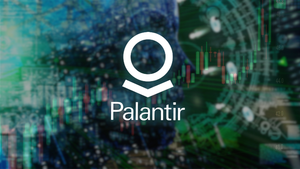Financial News
Market's Mettle: Is the Current Stock Boom a Sustainable Ascent or a Bubble on the Brink?

The global financial markets are currently riding a significant wave of optimism, with major indices reaching new highs and investor confidence seemingly robust. This sustained rally, particularly evident through late 2024 and continuing into 2025, has ignited a fierce debate among economists and strategists: is the current stock market boom a testament to underlying economic strength and transformative technological advancements, or is it an overheated phenomenon poised for a significant correction? The immediate implications for investors are substantial, demanding a careful assessment of market valuations, corporate earnings trajectories, and the evolving macroeconomic landscape as of October 1, 2025.
The Unprecedented Climb: A Detailed Look at the Current Rally
The U.S. stock market has demonstrated remarkable resilience and growth, with the S&P 500 (NYSE: SPX) gaining over 20% in 2024 and continuing its ascent, up 13.7% year-to-date as of September 30, 2025, closing near 6,688.46. The Nasdaq Composite (NASDAQ: IXIC) has soared an even more impressive 17.3% year-to-date, while the Dow Jones Industrial Average (NYSE: DJIA) has climbed over 9% year-to-date, reaching a record high of 46,397.89. This broad-based rally, which initially saw significant contributions from mega-cap technology stocks, has shown signs of expanding breadth in 2025, with other sectors like industrials and utilities also participating.
The timeline leading to this moment reveals a recovery from earlier inflationary pressures, with the Federal Reserve initiating interest rate cuts in late 2024 and expectations for further, albeit measured, reductions continuing into 2025. This accommodative monetary policy, coupled with robust economic fundamentals—including consistent GDP growth, healthy consumer spending, and a resilient labor market—has provided a fertile ground for corporate profitability. Analyst projections for S&P 500 earnings growth in 2025 hover around 12-15%, underpinning the optimistic outlook.
Key players and stakeholders involved in this rally include institutional investors, retail traders, and major corporations, particularly those at the forefront of technological innovation like Artificial Intelligence (AI). Companies such as NVIDIA (NASDAQ: NVDA), Microsoft (NASDAQ: MSFT), and Alphabet (NASDAQ: GOOGL) have seen their valuations surge due to AI enthusiasm. Initial market reactions have been overwhelmingly positive, reflected in continuous capital inflows into equity markets, though investor sentiment is described as "light to moderate" rather than euphoric, suggesting a degree of caution remains despite the strong performance.
However, concerns about elevated valuations persist. The S&P 500 is trading at over 24 times next year's forward earnings, significantly above historical averages. The "Buffett Indicator" (total market capitalization to GDP) stood at an alarming 217-219% as of mid-2025, strongly suggesting overvaluation. This dichotomy fuels the debate: are these high valuations justified by future growth prospects, or are they indicative of a market priced for perfection, vulnerable to any negative surprises?
The Beneficiaries and the Vulnerable: Corporate Impact
The current stock market boom has created clear winners and exposed potential vulnerabilities for others, largely dictated by their exposure to transformative technologies and their financial health.
Winning Companies and Sectors: The AI revolution remains the primary engine of growth. Semiconductor companies, crucial for AI infrastructure, are seeing immense demand. NVIDIA (NASDAQ: NVDA), with its dominant position in AI GPUs, continues to be a standout performer. Other chipmakers like Taiwan Semiconductor Manufacturing (NYSE: TSM), Broadcom Inc (NASDAQ: AVGO), and Advanced Micro Devices (NASDAQ: AMD) are also benefiting significantly. In AI software and services, Microsoft (NASDAQ: MSFT), leveraging its OpenAI partnership and Azure AI, and Alphabet (NASDAQ: GOOGL), with its vast AI investments, are key beneficiaries. Specialized AI firms like Palantir Technologies (NYSE: PLTR) and cloud data companies such as Snowflake (NYSE: SNOW) are also thriving. Beyond AI, the "Magnificent Seven" tech giants, including Amazon (NASDAQ: AMZN), Apple (NASDAQ: AAPL), Meta Platforms (NASDAQ: META), and Tesla (NASDAQ: TSLA), continue to drive market gains due to their scale and innovation. Broader sectors like Communication Services, Industrials (due to aerospace and reshoring), and even Utilities (driven by massive AI data center power demands) are also experiencing growth.
Companies and Sectors at Risk: Should the market correct or shift, several areas could face significant headwinds. Highly valued growth stocks, particularly those in the AI sector that have seen rapid appreciation, could be vulnerable if they fail to consistently meet ambitious growth expectations. While currently winning, companies like NVIDIA (NASDAQ: NVDA) and Palantir Technologies (NYSE: PLTR), due to their high valuations, are often cited with this caveat. Companies with substantial debt loads would also be particularly exposed in a downturn or rising interest rate environment, as flagging sales could make debt servicing challenging. Cyclical industrial companies, whose performance is tied to the broader economic cycle, could also be hit hard during a slowdown. Furthermore, certain segments of the Financials sector, such as some insurance companies, and even some Utilities, have been noted for potentially elevated valuations, making them susceptible to corrections. Lastly, companies with significant exposure to geopolitical tensions and new trade tariffs face increased costs, supply chain disruptions, and margin pressures.
Wider Significance: Echoes of the Past, Challenges of the Present
The current stock market boom's wider significance extends beyond mere financial gains, influencing economic confidence, capital formation, and the competitive landscape, all while drawing comparisons to historical market cycles.
This market rally, heavily concentrated in the technology sector, particularly around AI, bears striking resemblances to the dot-com bubble of the late 1990s. Both periods are characterized by the emergence of a transformative technology (the internet then, AI now) driving substantial growth in tech stocks and significant outperformance by a handful of large-cap growth companies. Market concentration, with a few tech giants dominating the S&P 500, is arguably even more pronounced today. Valuations, such as the cyclically adjusted price/earnings (CAPE) ratio, are also elevated, with the S&P 500's Shiller P/E ratio reportedly crossing 40 in late 2025, a level last seen before the dot-com crash.
However, crucial differences distinguish the present from the past. Today's market leaders are generally more established, profitable companies with strong balance sheets, unlike many speculative, loss-making startups of the dot-com era. While high, current valuation extremes are not as severe as the dot-com peak (e.g., Nasdaq's P/E ratio is around 35x today, half of its 71x peak in 2000). The macroeconomic environment is also different, with the late 1990s benefiting from robust GDP growth and modest inflation, contrasting with today's lingering inflationary concerns and geopolitical uncertainties.
Regulatory and policy implications are paramount. The Federal Reserve's ongoing interest rate cuts, initiated in late 2024, are generally supportive of equity markets by lowering borrowing costs and enhancing liquidity. However, government actions, particularly around trade tariffs, introduce significant volatility. New U.S. tariff policies announced in April 2025 reportedly led to increased market volatility and a global stock market crash, the largest decline since 2020, impacting trade-sensitive sectors. While markets often recover as uncertainty subsides, such policies can disrupt supply chains and increase input costs, posing a continuous challenge.
What Comes Next: Navigating the Future Landscape
Looking ahead, the stock market's trajectory will be shaped by a complex interplay of economic fundamentals, corporate performance, and policy decisions. Investors and businesses alike will need to adapt strategically to a dynamic environment.
In the short term (next 1-2 years), continued upward momentum is expected, albeit with potentially increased volatility and more moderate gains compared to the exceptional returns of 2024. Strong consumer spending and resilient corporate earnings are supportive factors. However, risks include potential market pullbacks of 5-10% due to overvaluation, sticky inflation leading to interest rate uncertainty, and ongoing geopolitical tensions. A potential U.S. government shutdown could also trigger short-term volatility. Market leadership is expected to broaden beyond mega-cap tech, with cyclical and value-style stocks potentially gaining more traction.
Long-term possibilities (beyond 2 years) suggest more moderated returns for U.S. large-cap equities, possibly around 6% annually over the next decade. International developed markets and especially emerging markets, like India, are eyed for potentially higher returns due to attractive valuations, faster economic growth, and demographic advantages. Continued innovation, particularly in AI, and capital spending on technology are expected to support U.S. productivity. Strategic pivots for investors include maintaining diversified portfolios across asset classes and geographies, focusing on fundamentals and value, and employing robust risk management. Businesses must prioritize flexibility, resilience, and continued innovation, leveraging data and technology to adapt to changing market conditions.
Market opportunities may emerge in undervalued sectors, emerging markets, and continued advancements in fintech and AI. Challenges include persistent market volatility, the ongoing battle against "sticky inflation," cybersecurity risks, and regulatory uncertainty. Potential scenarios range from continued growth with moderated returns and volatility to a significant market correction triggered by an unforeseen economic deterioration or credit event. There's also a possibility of an "anti-momentum" market shift, where value stocks outperform, or emerging markets significantly outperform developed ones over the next decade.
Wrap-up: A Balanced Outlook Amidst Uncertainty
The current stock market boom, extending robustly into late 2025, presents a nuanced picture of optimism tempered by caution. The key takeaway is a market driven by genuine technological innovation, particularly in AI, and supported by a resilient U.S. economy and generally accommodative monetary policy. However, this growth has come at the cost of elevated valuations, raising legitimate concerns about the market being "priced for perfection" and its susceptibility to corrections.
Moving forward, the market's trajectory will hinge critically on sustained corporate earnings growth, the Federal Reserve's ability to navigate inflation without stifling growth, and the impact of evolving geopolitical and trade policies. While the underlying economic fundamentals appear solid, the high valuations suggest that future returns may be more modest and volatile than those seen in the recent past.
Investors should watch closely for signs of continued earnings strength, any shifts in the Federal Reserve's interest rate policy, and the implications of the incoming presidential administration's fiscal and trade agendas. Diversification, a focus on fundamentally strong companies, and a long-term investment perspective will be crucial in navigating what promises to be an interesting and potentially challenging market landscape in the coming months.
This content is intended for informational purposes only and is not financial advice
More News
View More





Quotes delayed at least 20 minutes.
By accessing this page, you agree to the following
Privacy Policy and Terms Of Service.



